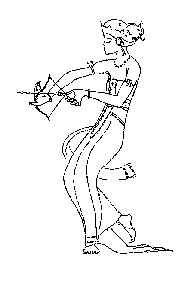

An important myth of European history sees the Age of Discovery as a time when the world was dramatically stripped of false enchantment, when it was measured, assessed, mapped and objectively known by Westerners for the first time. Accounts of the first official expeditions to China have all the overburden of raw data that accompanies a contemporary moon shot and such knowledge – it is said – brought economic expansion, scientific truth and the global exchange of information that created the modern world of our everyday experience.
Yet, an alternative history can be written, whereby the West took its ideas with it as it travelled, transforming and projecting them onto the world that it found, so that many of the new places visited were not so much ‘discovered’ as merely fixed on the map, since they had been invented in European thought long – sometimes centuries – before. California, the land of Prester John and Patagonia were all ‘known’ as mythical places long before they were geophysically located and Columbus died still doggedly convinced that he had reached distant India. What actually developed in the wake of such voyages of discovery was a literature rich in fantasy and metaphor in which authors freely copied from each other, exaggerated and invented, for the boundaries of the possible had yet to be set in stone and the world was still a place of infinite possibilities where women could conceive simply by being exposed to the heat of the sun and the coconut was really a dragon’s egg waiting to hatch. The pages of these works swarm with a lavish bestiary of strange creatures, bizarre cultural practices, absurd products of Nature and it is impossible to predict in advance which would turn out to be ‘true’ and which wholly phantasmagorical. Thus, although Stamford Raffles, that most sober of natural historians, would be careful to qualify exaggerated reports of the deadly qualities of the Javanese upas tree – whose exhalations were said to cause birds to drop dead from the sky above it – his description of the devil’s beetle box (Rafflesia arnoldi) with its stench of rotten flesh and carnivorous diet, seems no less improbable but just happens to be accurate.
The intoxicating and romantic possibilities of the exotic would be deliberately embraced in the 19th century, and cultivated and playfully fashioned into escapist fantasies of armchair travel. Balzac’s My Journey from Paris to Java clearly belongs to this genre and deserves to be more widely known as a classic. Yet its sensuous women, political animals and visions of incalculable wealth and extraordinary luxury, all have their parallels in allegedly factual works of much the same date. Indeed, such phantoms have never been banished from our imaginations and dreams. Every high street travel agent is a solid testimony to their enduring power and Balzac would have been the first to understand that, in the age of satellite navigation, we still orient ourselves by such mythical maps that alone have the power to nourish and console us.
Nigel Barley